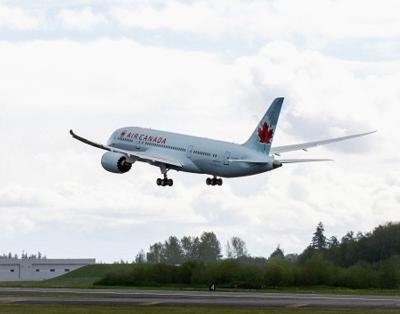Regulations Proposed By Transport Canada Are Inconsistent With NASA's Scientific Recommendations
The Safer Skies coalition, representing more than 8,000 passenger and cargo pilots across Canada, today expressed profound disappointment in the federal government for releasing aviation fatigue regulations that do not fully comply with established science.

"The Safer Skies coalition is profoundly disappointed by the government's new aviation regulations. The measures fall far short of established science. The government's position represents a missed opportunity to significantly improve passenger safety for Canadians," said Milt Isaacs, CEO of the Air Canada Pilots Association. "NASA's recommendation of no more than 10 hours of duty time at night (8.5 hours of flight time) is quite clear, and yet the government has ignored facts and science (published by NASA and Transport Canada's own scientific advisor) in favour of regulations that favour operator commercial concerns over a recommended margin of safety for passengers and crew."
"The Government's failure to recommend well-established science and international best practices that have helped advanced aviation safety across the globe will adversely impact Canadian aviation for years to come," said Capt. Dan Adamus, Air Line Pilots Association, International (ALPA) Canada president. "The Government has delayed updating fatigue regulations for far too long and it is entirely unacceptable that most airlines will have up to four years to implement."
"Canada had some of the worst aviation regulations in the world and after seven years of consultation, we still have one of the worst regulations in the world in many areas," said Jerry Dias, National President, Unifor. "Nowhere else in the world can pilots fly as many hours in a day, week, and month with as little time off to recover as Canada. The government ought to use this opportunity to harmonize with international standards to strengthen protections for pilots and passengers."
The Safer Skies Coalition is disappointed that the government has chosen to divide pilots, their passengers, and the communities they serve. All pilots are equal and should have the same margin of safety across the board. Aviators flying smaller aircraft have to wait for 48 months to be protected by the regulations, four times longer than pilots at larger carriers, who have an implementation timeframe of 12 months.
The proposed regulations do not assign a maximum flight duty time that is based on science. The new maximum allowable time for long haul flights at night far exceeds the hours recommended for pilots by NASA's Ames Research Center by up to 25%, and additionally, is higher than allowed by our neighbours in the United States. The physiology of a Canadian pilot is identical to that of an American pilot, and science does not support requiring Canadian aviators to endure longer duty periods. In fact, under these new rules, pilots in Canada will have the highest time at work in the world.
Another concerning issue contained in the draft regulations is that the proposed Fatigue Risk Management System does not rely on science-based prescriptive limits as a foundation, nor does it require independently verifiable data, stringent Transport Canada approval and oversight. This will allow operators to place commercial considerations ahead of safety concerns, thereby creating an unacceptably low margin of safety for Canadian air passengers and for those communities and neighbourhoods near airports.
(Source: Safer Skies Coalition news release. Image from file)
 ANN's Daily Aero-Term (04.20.24): Light Gun
ANN's Daily Aero-Term (04.20.24): Light Gun Aero-News: Quote of the Day (04.20.24)
Aero-News: Quote of the Day (04.20.24) ANN's Daily Aero-Linx (04.21.24)
ANN's Daily Aero-Linx (04.21.24) Aero-News: Quote of the Day (04.21.24)
Aero-News: Quote of the Day (04.21.24) ANN's Daily Aero-Term (04.21.24): Aircraft Conflict
ANN's Daily Aero-Term (04.21.24): Aircraft Conflict



